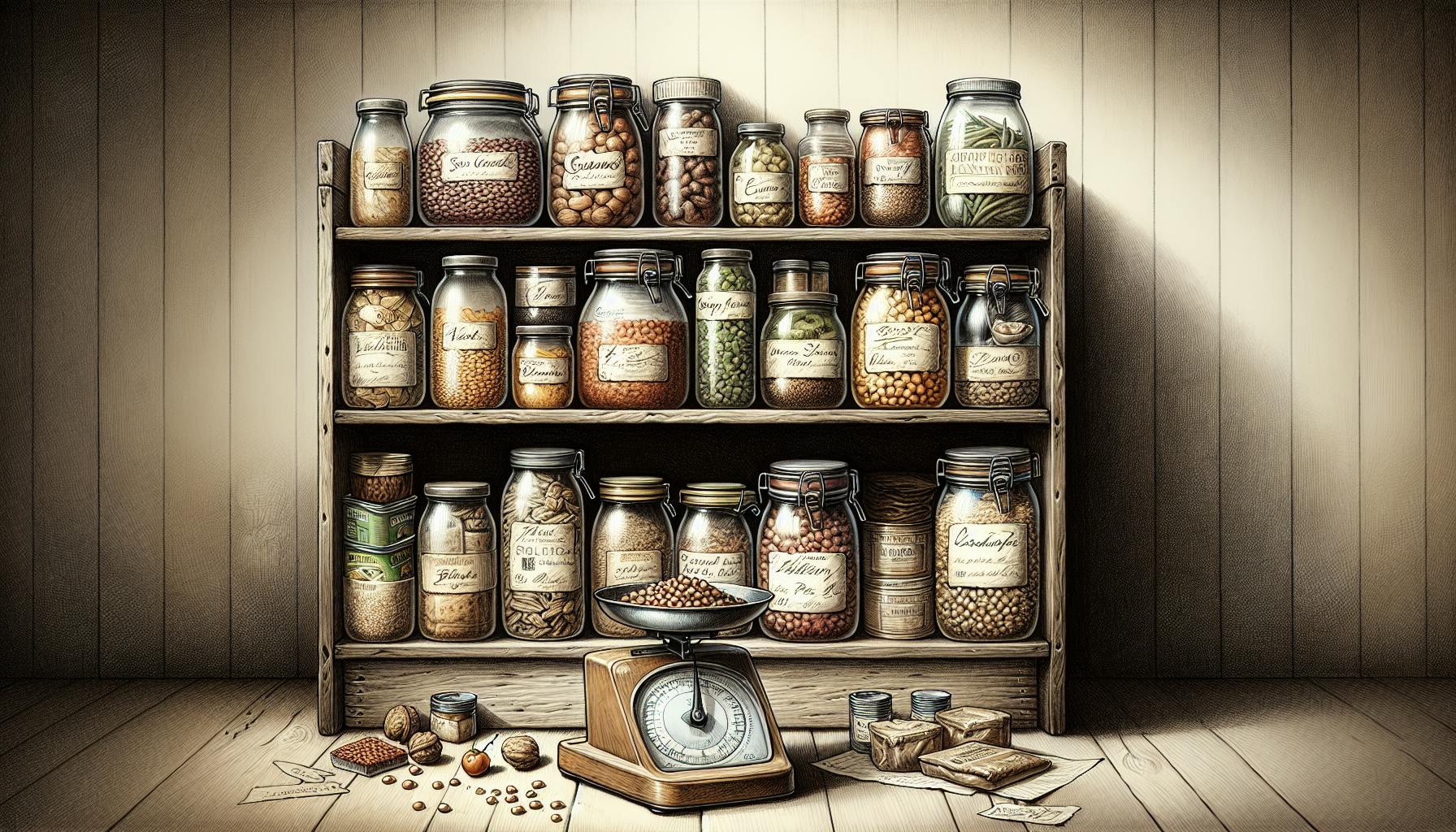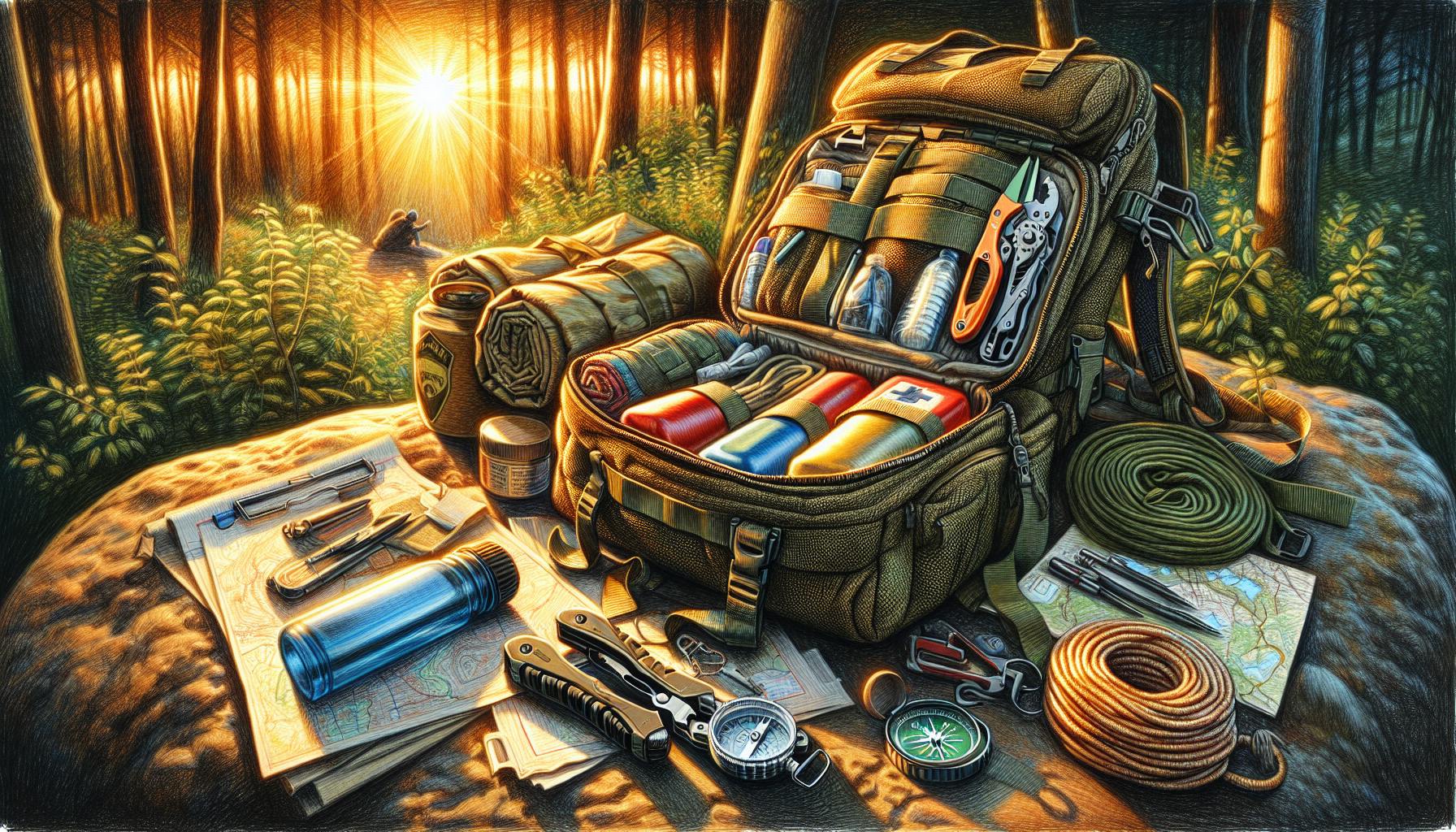Introduction
Being prepared for natural disasters and emergency situations is critical to ensure the safety and well-being of yourself and your loved ones. Recent years have seen a dramatic increase in extreme weather events and natural disasters, with 2021 setting records for billion-dollar climate disasters in the United States according to NOAA. Having the proper supplies on hand will provide sustenance, first aid, and tools for survival in the event of power outages, severe weather events, earthquakes, and more. While each region faces different types of potential disasters, there are some essential items that every survival checklist should include.
In this comprehensive guide, we'll outline the must-have items to have on hand and provide tips for customizing your survival kit based on your location, family needs, and the types of disasters most likely to occur. We'll also highlight some top recommended survival gear to invest in as you build and maintain your emergency preparedness supplies. Let's get started on gathering the survival checklist essentials for you and your family!
Essential Items for Your Natural Disaster Survival Checklist
When preparing your emergency kit, be sure to stock up on the following basic categories:
- Food and Water - Non-perishable food, water bottles, canteens, purification tablets. At least 1 gallon per person daily.
- First Aid - Fully stocked medical kits, medications, bandages, ointments, gloves, scissors, thermometer.
- Emergency Gear - Flashlights, batteries, radio, matches/lighter, whistles, dust masks, pocket knife, cash.
- Sanitation and Hygiene - Toilet paper, paper towels, garbage bags, soap, toothpaste, hygiene products.
- Tools and Supplies - Generators, duct tape, tarps, ropes, fire extinguishers, ax, shovel.
- Documents - Copies of ID cards, insurance info, prescriptions, contact info.
Having these essentials forms a basis for survival preparedness. But each category deserves a deeper look at the specific items to include:
Food and Water
When packing food and water, focus on shelf-stable items that do not require refrigeration. Some must-have items include:
- Canned goods like beans, soups, vegetables, fruit packed in juice. Look for pop-top lids on brands like Campbell's, Progresso, and Del Monte.
- Dried foods like beef jerky, fruit leathers, granola bars, nuts, crackers. Products by Wise Company, Mountain House, and SOS are good choices.
- Comfort foods like peanut butter, jam, honey, instant coffee, chocolate bars.
- At least 1 gallon of water per person per day for 2 weeks. Bottle water or use containers from Reliance or Scepter.
- Water purification systems like the Sawyer Mini filter or Potable Aqua purification tablets.
- Pet food with a long shelf life, plus bowls and can openers.
- Special dietary needs - baby formula, protein shakes, glucose tabs.
Rotate and refresh food/water supplies every 6 months. Keep items in a cool, dark place to maximize freshness.
First Aid Supplies
Medical emergencies can happen at any time, so having a fully stocked first aid kit is a must for your survival checklist. Be sure to include:
- First aid kits packed with essentials like bandages, gauze, medical tape, tweezers, scissors, gloves. Look for kits by Red Cross, VetAid, or Adventure Medical.
- Medications - both prescription and over-the-counter like pain/fever relievers, antacids, allergy meds, antibiotics.
- Additional supplies - thermometer, antiseptic wipes, antibiotic ointment, medical gloves, sterile dressings.
- Specialized items like glucose meter with strips, epi-pen, blood pressure monitor.
- Trauma items such as tourniquets, hemostatic gauze, trauma shears, butterfly bandages.
- Glasses, hearing aid batteries, denture supplies, etc.
Check expiration dates every 6 months and refresh any expired medications, food, or supplies.
Emergency Gear
Emergency gear helps provide light, communication, tools, and protection in disaster scenarios where power, utilities, and infrastructure are compromised. Must-have items include:
- LED flashlights with extra batteries - Streamlight, Maglite brands recommended.
- Emergency radios like Energizer, Midland, or C. Crane models.
- Whistles for signaling - Fox 40 Micro whistles recommended.
- Dust masks for filtering air particles
- Matches, lighter, magnesium fire starter like ones from Gear Aid.
- Multi-tool or Swiss Army Knife
- Cash in small bills and coins as credit cards won’t work without power
Look for waterproof, shock-resistant gear options when possible for added durability.
Sanitation and Hygiene
Maintaining proper sanitation and hygiene during disasters helps prevent illness and disease. Be sure to stock:
- Toilet paper, paper towels, soft wipes, garbage bags
- Bar soap, liquid hand soap, hand sanitizer, disinfecting wipes
- Toothbrush, toothpaste, dental floss, deodorant
- Feminine hygiene products, adult incontinence supplies
- Sunscreen, insect repellent, prescription glasses
Rotate hygiene supplies every year to keep fresh.
Tools and Supplies
Having robust tools and supplies aids in securing your home, handling debris, and addressing urgent issues quickly. Must-have items include:
- Portable generators with extra gasoline or diesel fuel
- Duct tape, heavy duty plastic sheeting, tarps
- Fire extinguishers - test pressure monthly
- Bungee cords, ropes, ratchet straps to secure objects
- An axe, shovel, broom for clearing debris and downed trees
- Work gloves and protective goggles
Look for waterproof, heavy duty options when possible. Replace fuel every 6 months.
Documents
Amidst the chaos of a disaster, important documents can be easily misplaced. Copy and store:
- Identification cards like driver’s licenses and passports
- Insurance information including health, home, auto
- List of emergency contacts with phone numbers
- Prescription info, medical history, doctors’ names
- Pet vaccination records and microchip details
Consider scanning copies and storing digitally in the cloud for remote access if originals are destroyed. Keep physical documents in a clearly marked, waterproof container for fast access during an emergency. Update details annually.
By gathering supplies across these essential categories, you’ll form a solid foundation for your survival checklist. But customizing your kit for your situation is equally important.
Customizing Your Survival Checklist
While the basics like food, water, first aid, tools, etc. are universal, you'll want to tailor your survival checklist to your specific needs and likely risks.
- Consider climate, geography, and prevalent disasters in your region.
- Account for medications, devices, pets, babies, and the elderly.
- Maintain and update your kit every 6 months.
- Store supplies so they are protected yet easily accessible.
- Keep copies handy and share lists with family.
Let's explore how to personalize your emergency preparedness:
Regional Considerations
Depending on your location, you may be more prone to specific natural disasters. Prepare accordingly:
- Hurricane or flood zones - stock sandbags, waterproof gear, boat/raft.
- Earthquake prone areas - pack sturdy shoes, gloves, goggles to protect from debris.
- Tornado Alley - have an underground storm shelter, weather radio.
- Cold climates - store warm layers, thermal blankets, heat sources like propane.
- Wildfire zones - have air masks, escape ladders, fire extinguishers ready.
Check emergency preparedness guidance from organizations like FEMA and the Red Cross for region-specific recommendations.
Personalizing for Needs
Tailor your supplies to the unique needs of your family or group:
- Medications, medical equipment, mobility aids, hearing aids with batteries.
- Pet supplies - food, extra water, litter, leashes, carriers.
- Infant formula, extra diapers and wipes, baby food and bottles.
- Entertainment items like books, playing cards, puzzles, coloring books.
- Extra eyeglasses, battery packs for electronics, copies of key documents.
Having activities and comforting items can ease stress during prolonged emergencies.
Maintaining Your Kit
Check supplies twice a year and replenish any expired, damaged, or missing items.
- Set reminders to review your kit in the spring and fall.
- Store items in portable plastic bins, duffel bags, or backpacks.
- Keep supplies in an accessible place like the garage, closet, or basement.
- Label containers clearly for fast identification and organization.
- Make copies of the survival checklist for each family member to reference.
Take the time to properly maintain your emergency kit so it's ready immediately when disasters strike.
Emergency Prep Resources
Consult guidance from preparedness organizations when assembling your survival checklist:
- FEMA's recommendations for building emergency kits.
- Red Cross disaster safety checklists tailored for your region.
- WeLovePrepping's resources on disaster planning and readiness.
- Emergency kit supply companies like Uncharted Supply Co.
- Local community preparedness groups and training programs.
Utilize all available resources to create the most comprehensive survival plan.
Top Survival Gear to Have On Hand
In addition to your main supplies, invest in versatile survival gear designed to aid in light, communication, first aid, sanitation, and utility needs:
- Reliable flashlight, radio, and extra batteries or cranks
- Fully stocked first aid kits for trauma and illnesses
- Multi-tool or Swiss Army Knife with assorted functions
- Thermal emergency blankets for retaining warmth
- Portable water purification systems like Lifestraws or tablets
Here's a more in-depth look at some of the top specific products to include in your survival kit:
Light and Communications Gear
Having renewable light sources and communication devices is vital when power is compromised.
- LED flashlights with extra batteries - Streamlight, Maglite brands recommended.
- Emergency radios like Energizer, Midland, or C. Crane models.
- Whistles for signaling - Fox 40 Micro whistles recommended.
- Reflective gear like vests, bands for visibility.
- Maps and compass for navigation.
- Two-way radios for short-range communication.
Look for impact, water, and weather resistant options.
First Aid Supplies
Keep medical essentials on hand to treat injuries and illnesses:
- Adhesive bandages, gauze pads, medical tape, trauma shears.
- Antibiotic and antiseptic ointments to prevent infection.
- Medications - antacids, antihistamine, ibuprofen, acetaminophen.
- CPR barrier masks for emergencies.
- Tourniquets, splints, trauma dressings for major injuries.
Refresh medications and replace used items every six months.
Tools and Utensils
Robust tools suited for survival scenarios include:
- Multifunctional Swiss Army Knife or multi-tool like a Leatherman.
- Heavy duty duct tape for repairs - Gorilla Tape recommended.
- Fire extinguishers like First Alert or Kidde brands.
- Compact hatchet or ax for chopping wood.
- Emergency foil blankets to retain body heat.
Look for contractor grade options built to withstand heavy use and outdoor conditions.
Sanitation Items
Maintain proper hygiene with:
- N95 particulate respirator masks to filter air.
- Portable toilet such as a Cleanwaste Go Anywhere model.
- Toilet paper, paper towels, soft wipes, feminine products.
- Disinfecting wipes, trash bags for waste and refuse.
- Bar soap, alcohol-based hand sanitizer.
Choose septic safe options when possible.
Other Essential Gear
Miscellaneous but vital supplies include:
- Cash - small bills and coins since digital payments won't work.
- Work gloves providing hand protection.
- Weather appropriate clothes and sturdy footwear.
- Sleeping bags or wool blankets to retain warmth.
- Portable water purification systems like LifeStraws.
Having versatile gear aids survival in diverse emergency scenarios.
Key Takeaways on Survival Checklist Essentials
Preparing for disasters begins with gathering key supplies tailored to your situation and needs:
- Stock at least 2 weeks worth of water, food, and essential items.
- Include first aid, hygiene, sanitation, communication, and utility tools.
- Customize your kit based on likely risks and hazards in your region.
- Check supplies every 6 months and replace expired or damaged items.
- Store items in easily accessible yet protected containers.
- Keep copies of important documents like IDs in your kit.
Being proactive with emergency planning ensures you have the necessary resources to safely weather any crisis. Use this guide as a starting point to assemble survival checklist essentials that provide sustenance, safety, and hope until conditions improve. Stay vigilant and prepared!
Conclusion
Having reliable supplies in an emergency or disaster scenario can truly mean the difference between life and death. Use this comprehensive survival checklist to stock your home and protect your loved ones. Assess likely risks in your area, account for specific needs, and invest in high-quality gear designed to aid in survival situations. While no one can predict when disaster will strike, you can control your level of readiness. Build your emergency kit today so you have the essentials for weathering any crisis safely.


